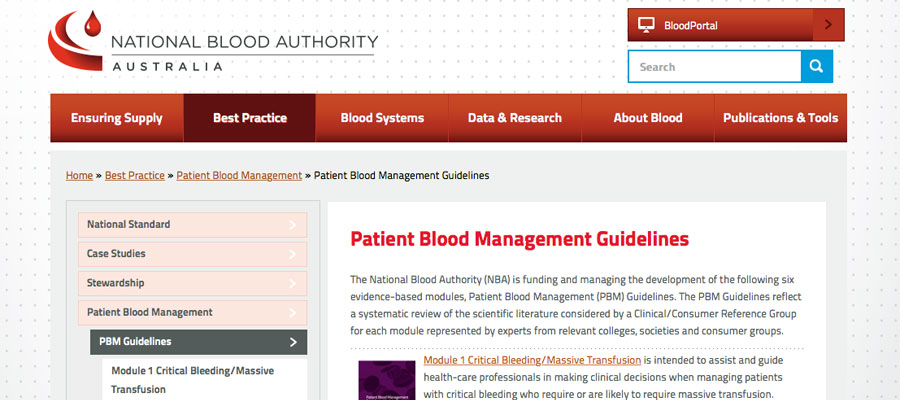Australia – 11th May 2015
WORLD-first patient blood management guidelines developed in Australia have reduced demand for packed red blood cells by more than 16% and led to significant cost savings, according to the general manager of the National Blood Authority.
Leigh McJames told MJA InSight that the patient blood management (PBM) guidelines represented a landmark move away from the previously liberal approach to blood transfusion to a more restrictive and conservative process.
However, Mr McJames said the shift has been driven by much more than cost-efficiency.
“There has been a shift in the belief systems in clinical practice. Blood transfusion is now viewed like a liquid organ transplant, where there are just as many risks to consider”.
Mr McJames was commenting on a US study published last week in JAMA Surgery which assessed the economic impact of liberal blood transfusions.
The authors used data on haemoglobin (Hb) levels that triggered a transfusion as well as overall blood product use among 3027 patients who underwent pancreas, liver or colorectal surgery at a US hospital between 2010 and 2013.
Guidelines defined a liberal Hb trigger as the transfusion of packed red blood cells (PRBCs) for an intraoperative Hb level of 10 g/dL or greater, or a postoperative Hb level of 8 g/dL or greater. The authors found that 942 patients received at least one PRBC transfusion — 8.7% during the operation, 14.2% during postoperative care and 8.2% during both. A total of 4000 units of PRBCs were transfused in the intraoperative and postoperative periods.
The results demonstrated that overuse of PRBC transfusion in surgical patients was common, the authors wrote. “More than 1 in 10 units of PRBCs were transfused using a liberal Hb trigger.”


